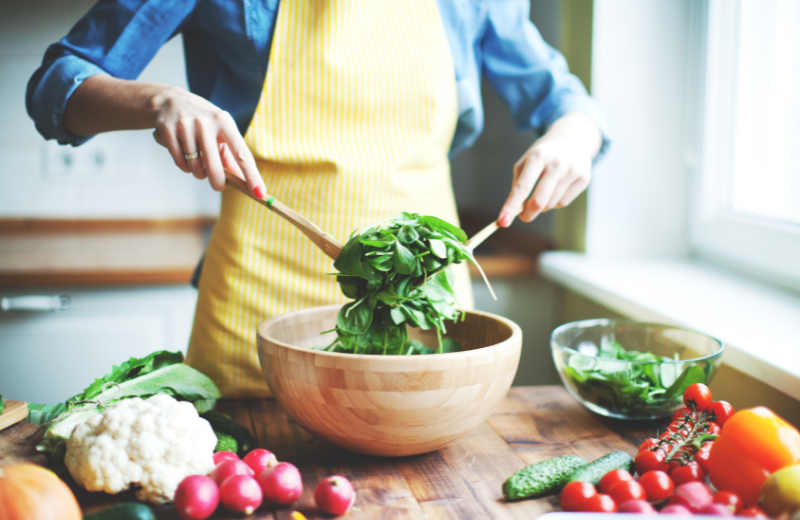
Summertime offers a wide variety of fresh produce from farms and gardens, and eating more fruits and vegetables is a great way to give your body what it needs.
How much is enough? In December 2020, the U.S. departments of Agriculture and Health and Human Services released their “Dietary Guidelines for Americans 2020–2025”. The guidelines recommend 2-3 servings of vegetables and 1½-2 servings of fruit for women and 3-4 servings of vegetables and 2-2½ servings of fruit for men.
From these recommendations comes the “Get your 5 a day” public service announcement that you might see on a billboard while taking a road trip this summer. One cup of cooked or raw vegetables or 2 cups of leafy greens is equal to 1 vegetable serving, and 1 cup of fruit or ½ cup of dried fruit is equal to 1 fruit serving. An easy way to meet this recommendation is to fill half of your plate with fruits and vegetables at each meal.
Fruits and vegetables are a good source of fiber, which can aid with healthy digestion. They also contain vitamins and minerals that support many bodily processes, including metabolism, sleep, and fighting off illness.
Shopping options
Where do you purchase your produce? If you are looking for fresh local produce, a farmers market can be a great option. Fresh fruits and vegetables also can be found at your favorite grocery store. The UAB Mobile Market visits a number of locations that may be close to your home.
If you are worried about spoilage, frozen or canned goods are a fantastic choice, as their contents are picked at the peak of freshness. However, make sure to check the label for sodium and added sugar content. Choose fruit packed in juice or water instead of heavy syrup to help reduce your intake of added sugars. Avoiding vegetables that are pre-sauced puts you in control of the flavor profile and salt content – especially if you have a health condition such as high blood pressure. Rather than thinking of plain broccoli as a bad thing, consider it a blank canvas. Plain broccoli can be roasted or air fried with lemon and herbs or added to a stir fry with a delicious homemade sauce.
Salads, smoothies, and salsas
Salads, smoothies, and salsas are three easy ways to incorporate more fruits and vegetables into your summertime routine. They don’t require the oven, which keeps your home cooler during the hot weather. Try to incorporate at least three different vegetables and/or fruits into the smoothie, salsa, or salad. For example, you can make a green smoothie with mango, peaches, and spinach. Salsas can be made with fresh or canned tomatoes, onions, and jalapeño peppers, and salads can include romaine lettuce, cucumbers, and tomatoes.
A fruit salsa can add a great flavor to lean proteins such as grilled chicken or salmon. A smoothie can be a refreshing beverage after spending time outside. And a salad can easily serve as a complete meal when protein is added. Plant-based protein options include black beans, chickpeas, and other beans/legumes (nuts/seeds), while lean animal proteins include chicken and fish.
Also, keep in mind that salads do not have to be limited to a leafy green base; grains and legumes can serve as a base as well. Consider a whole grain pasta salad, quinoa salad, or bean salad with summer vegetables and herbs.
Summer is full of so many good things, so make sure that your summer is full of fruits and vegetables, too.
